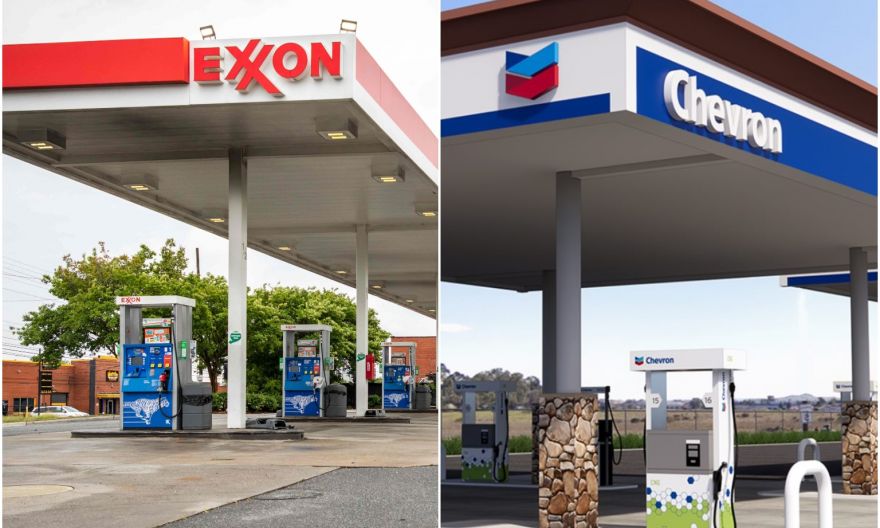Exxon and Chevron ride plastics boom to cash-flow bonanzas

HOUSTON (BLOOMBERG) – Exxon Mobil Corp and Chevron Corp swung to their biggest profits since pre-pandemic days amid surging demand and prices for plastics and energy.
Exxon reported US$4.69 billion in profit, the best quarter since late 2019, as its chemical division turned in a record performance. Chevron’s US$3.1 billion second-quarter net income was its strongest showing since the start of 2020 and prompted the driller to revive share buybacks that were suspended more than a year ago.
The companies’ combined cash flow from operations approached US$17 billion, signaling an across-the-broad recovery after the dark days of 2020 that saw the titans of American oil incur massive financial losses. Investors cheered Friday’s announcements, boosting the shares of both explorers in pre-market trading in New York.
if( window.innerWidth<=740 && document.getElementById("dfp-ad-imu1-mobile") != null) {
var element = document.getElementById("dfp-ad-imu1");
element.parentNode.removeChild(element);
document.getElementById("dfp-ad-imu1-mobile").id = "dfp-ad-imu1";
}
googletag.cmd.push(function() {
googletag.display("dfp-ad-imu1");
});
Chevron’s share repurchases will begin during the current quarter and range between US$2 billion and US$3 billion a year, around half the amount it devoted to the program before it was suspended in early 2020. Chevron’s move followed similar steps by Royal Dutch Shell Plc, TotalEnergies SE and Eni SpA, all of which have reinstated buybacks this week.
“It says we’re confident in the future,” Chief Financial Officer Pierre Breber said in an interview. The level of buybacks was chosen because “it really is a range that allows us to also continue to pay down debt.” Stock repurchases are being revived or raised across the board as sectors as diverse as steelmakers, retailers and manufacturers ride the crest of economic expansion. In particular, Big Oil executives are seeking to reward shareholders as commodity prices rise, a turnaround from previous booms when excess cash was poured into costly growth projects.
Faced with enormous climate challenges, the industry is attempting to entice investors by offering strong returns at a time when the dividend yield of the S&P 500 Index is at the lowest in almost two decades.
if( window.innerWidth<=740 && document.getElementById("dfp-ad-midarticlespecial-mobile") != null) {
var element = document.getElementById("dfp-ad-midarticlespecial");
element.parentNode.removeChild(element);
document.getElementById("dfp-ad-midarticlespecial-mobile").id = "dfp-ad-midarticlespecial";
}
googletag.cmd.push(function() {
googletag.display("dfp-ad-midarticlespecial");
});
In eschewing buybacks, Exxon is the holdout among the four oil supermajors that have thus far disclosed quarterly results. Fresh off losing a proxy battle with an activist investor, which took control of a quarter of Exxon’s board, Chief Executive Officer Darren Woods’s immediate priority is to use excess cash to pay down debt.
After slashing capital spending and laying off 14,000 employees, Exxon has positioned itself to reap the rewards that come from this year’s recovery in demand for motor fuels and petrochemicals. On Friday, the company said full-year expenditures would be at the low end of the previously announced $16 billion-to-$19 billion range.
Exxon posted adjusted earnings of US$1.10 a share, exceeding the 97-cent average estimated among analysts in a Bloomberg survey. As for Chevron, it earned US$1.71 a share, on an adjusted basis, during the second quarter, trouncing the US$1.60 average estimate.
Exxon rose 0.9 per cent at 8.07 am in New York. Chevron advanced 1.2 per cent.
Chervon’s repurchasing program comes on top of a dividend increase earlier this year, becoming the only Western oil supermajor to lift the payout above pre-pandemic levels. The company also shaved about US$1 billion off its previous full-year capital spending estimate of US$14 billion.
Even with recent increases, Shell’s and BP Plc’s dividends still lag pre-Covid-19 payouts. Exxon Mobil Corp. held its dividend steady earlier this week. Key to Chevron’s strength is that it entered the pandemic in a stronger financial position than rivals, with a low debt burden.
The buyback also signals a bullish outlook. CFO Breber said the repurchases will be sustained even during periods of lower oil prices. “I was clear on last quarter’s earnings call that we would start a buyback when we were confident we could sustain it over the cycle,” he said. “We’d want to sustain it for multiple years.”
